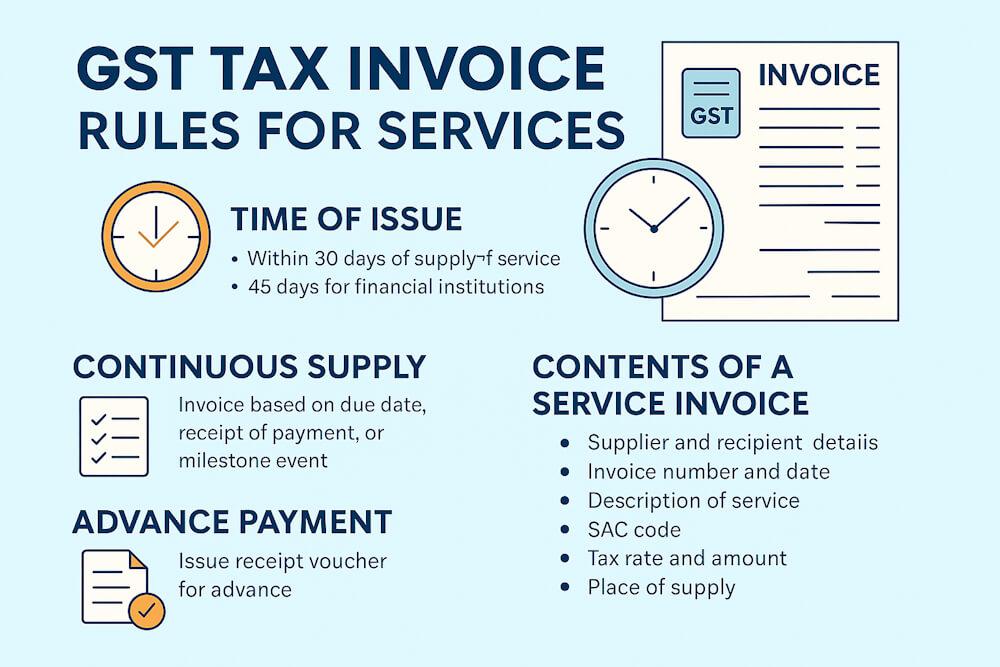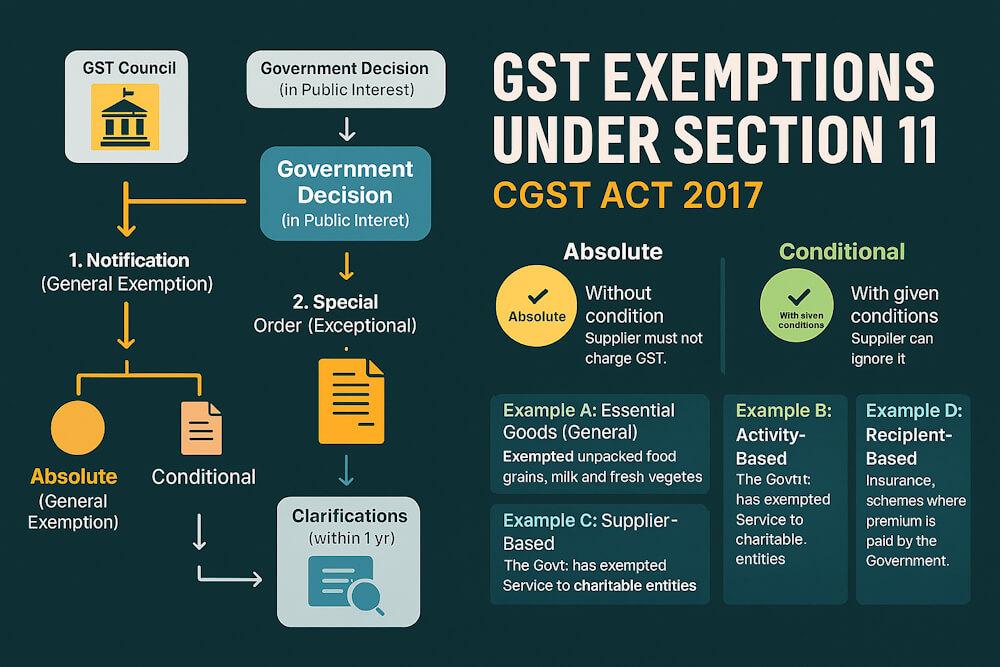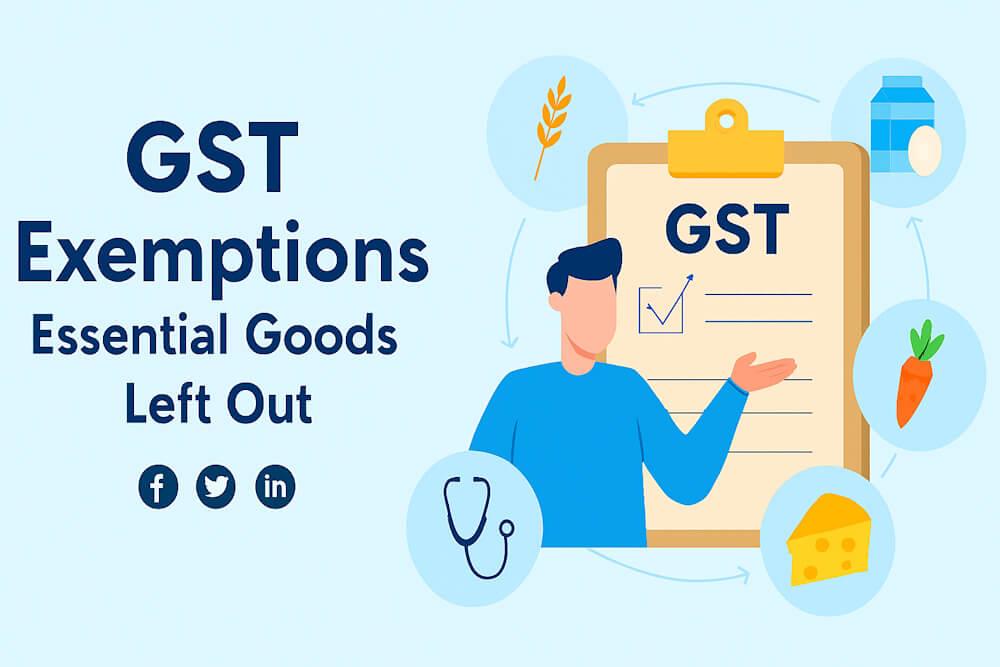E-commerce feels simple on the surface. You open an app, tap “Buy Now,” and a package shows up at your door. Or maybe you book a cab on Ola, stream Netflix, or order pizza from Zomato. For you, it’s seamless. But for GST compliance? Not so seamless.
The big question is: where exactly is the “place of supply” when things happen online? If you’re a seller or even an e-commerce platform, this one question decides whether you charge IGST or CGST+SGST, which state pockets the tax, and whether your buyer gets input credit.
Miss it, and you’re not just looking at messy returns — you might even land a GST notice. Let’s break this down the way it actually plays out, not how the law book phrases it.
Why Place of Supply Gets Complicated Online
In old-school business, you could just follow the truck. Goods left your warehouse in Delhi and got delivered in Jaipur? Done — inter-state supply, IGST applies.
But e-commerce? It doesn’t care about physical boundaries. A seller might be in Pune, the warehouse in Noida, the customer in Lucknow, and the platform’s head office in Bengaluru. Who gets the tax then? That’s the exact mess the “place of supply” rules are trying to solve.
When Goods Are Sold Through Platforms
For goods, the law sticks to a simple mantra: look at the delivery address. Doesn’t matter where the app is based, where the warehouse is, or where the seller sits. The supply is counted where the product lands.
Take this: a Mumbai seller lists a laptop on Amazon, and a customer in Patna clicks “Buy.” The laptop travels across states, reaches Bihar, and boom — the place of supply is Bihar. IGST applies because it’s inter-state.
It feels almost too obvious, but sellers often slip up. They sometimes report their own state as the place of supply, forgetting that GST cares about the buyer’s doorstep, not the seller’s shop.
When Services Are Booked Online
Now services — that’s where things get tricky. Platforms like Ola, Swiggy, or MakeMyTrip make the lines fuzzy. The servers might be in one city, the company’s head office in another, but the service? That happens wherever you consume it.
Say you book an Ola ride in Delhi. Ola’s app might run on servers sitting in Bengaluru, but the car drove you around Delhi. Place of supply = Delhi.
Or you order biryani on Zomato in Hyderabad. GST doesn’t care where Zomato’s company headquarters is. You ate the food in Hyderabad, so Hyderabad is where the supply happened.
The beauty and headache of services is that they follow the consumer.
Cross-Border Supplies Through E-Commerce
Now let’s throw borders into the mix. What happens when the buyer or seller is outside India?
- Imports: If an Indian customer buys from a foreign seller (say a gadget from Amazon Global), the place of supply = India. GST shows up as IGST at customs. You can’t dodge it.
- Exports: If an Indian seller uses a platform like Etsy or Amazon to sell abroad, the place of supply = outside India. These are zero-rated supplies. No GST charged on the invoice, but the seller can still claim refunds on input tax.
I know a small jewelry seller in Jaipur who listed her items on Etsy. She accidentally charged Indian GST on her invoices. Her US buyers flat-out refused to pay. She had to redo everything, apply for a refund, and wait months for the money to come back. Lesson learned: exports are zero-rated, not taxed like domestic sales.
The Role of E-Commerce Operators
Platforms aren’t just middlemen — GST law actually gives them extra responsibilities. Operators like Flipkart, Swiggy, or Ola have to collect TCS (Tax Collected at Source) and deposit it.
Sounds simple, but imagine the data crunch. Thousands of transactions daily, each needing to be tagged to the right state and seller. If there’s even a small mismatch between what the operator reports and what the seller reports, input credit problems pop up.
I’ve seen sellers tear their hair out over this. One Delhi seller shipped goods to Mumbai but mistakenly showed Delhi as the place of supply in his GST return. The buyer’s input credit didn’t match, and both sides had to redo their filings.
Digital Subscriptions and OIDAR Services
Netflix, Spotify, Hotstar — all those subscriptions fall into something called OIDAR (Online Information and Database Access or Retrieval). Sounds fancy, but the rule is simple: tax follows the customer’s location.
So if a student in Kolkata subscribes to Netflix, even though Netflix bills from abroad, the place of supply = Kolkata. That’s why you see GST in your monthly subscription bill.
This rule exists to stop foreign digital players from skirting taxes while still making money from Indian consumers.
Common Pitfalls in E-Commerce GST
E-commerce makes compliance harder than people expect. A few slip-ups I’ve seen over and over:
- Sellers mix up their state with the delivery state. For goods, always go with the delivery address.
- Exporters confuse “zero-rated” with “exempt.” Zero-rated means you can still claim ITC refunds, exempt doesn’t.
- Startups importing online services forget about reverse charge. They assume no GST since the provider is abroad, but the law says otherwise.
- TCS mismatches between operators and sellers lead to reconciliation nightmares.
And it’s not just theory — these mistakes hit the pocket. That Delhi seller with the Mumbai buyer? He had to file revisions, his buyer’s ITC was stuck for weeks, and both had to spend time fixing what should’ve been right the first time.
Real-Life Scenarios to Nail It Down
Let’s map out a few situations so it sinks in:
- A Lucknow customer orders sneakers from a Bengaluru seller on Flipkart → Place of supply = Uttar Pradesh (delivery). IGST.
- A tourist books an Ola cab in Goa → Place of supply = Goa. CGST + SGST.
- A Hyderabad user pays for Netflix → Place of supply = Hyderabad. IGST under OIDAR.
- A Jaipur handicraft seller ships jewelry to London through Amazon Global → Export, zero-rated. Place of supply = UK.
- An Indian freelancer buys Adobe software online → Import of service, place of supply = India. GST payable by the freelancer under reverse charge.
Notice how every time, GST traces the consumption point — where the goods land or where the service is used.
Why All This Matters for Sellers
If you’re a small business, e-commerce feels magical. Put your product up, get orders from across the country. But GST compliance doesn’t care about magic. Every order leaves a paper trail, and the place of supply decides:
- Which type of GST you charge.
- Which state gets the revenue.
- Whether your buyer can claim input tax credit.
Mess it up, and you won’t just annoy the taxman — you’ll annoy your buyers too, because their ITC won’t match.
Wrapping It Up
Place of supply in e-commerce is actually simple once you zoom out:
- Goods follow the delivery address.
- Services follow the place of consumption.
- Imports get taxed in India.
- Exports are zero-rated.
- Digital subscriptions follow the customer’s location.
The hard part is keeping the records clean when sellers, warehouses, buyers, and platforms are spread across states and sometimes even countries.
The safest way? Whenever you’re confused, just ask: “Where did the product land, or where was the service enjoyed?” That’s usually your answer.
So the next time you tap “Buy Now,” just remember — somewhere in the background, GST is tagging that order to a state, quietly deciding who gets the tax share.





